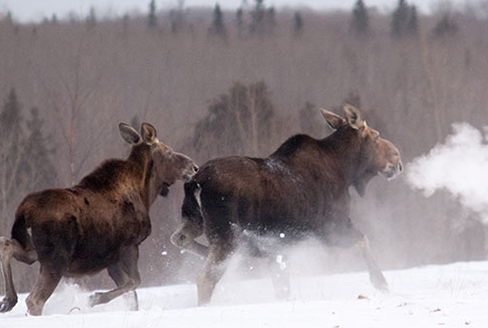For the ninth year in a row, Minnesota’s moose population remains relatively stable, but reproductive success – one of the factors that has the greatest impact on moose survival over time – remains low.
This past winter, the DNR estimated the moose population to be 3,150 animals (between a range of 2,400 and 4,320). Due to the variance in this type of annual population estimate, this year’s estimate does not suggest a decline from last year’s estimate of 4,180 moose. The survey provides an estimate rather than documenting the precise number of moose because biologists cannot see or count every moose across the 6,000-square mile survey area. They survey a portion of the moose range every year to generate the estimate.
While the recent population stability is good news, DNR researchers point out that Minnesota moose remain at risk over the long term. The moose population has declined from an estimated 8,840 animals in 2006.
Low reproductive success and continued deaths from brainworm and other diseases make it difficult for Minnesota’s moose population to recover.
Both the Fond du Lac Band of Lake Superior Chippewa and the 1854 Treaty Authority contributed funding and personnel for the annual survey. The survey is available on the DNR’s moose management page.




